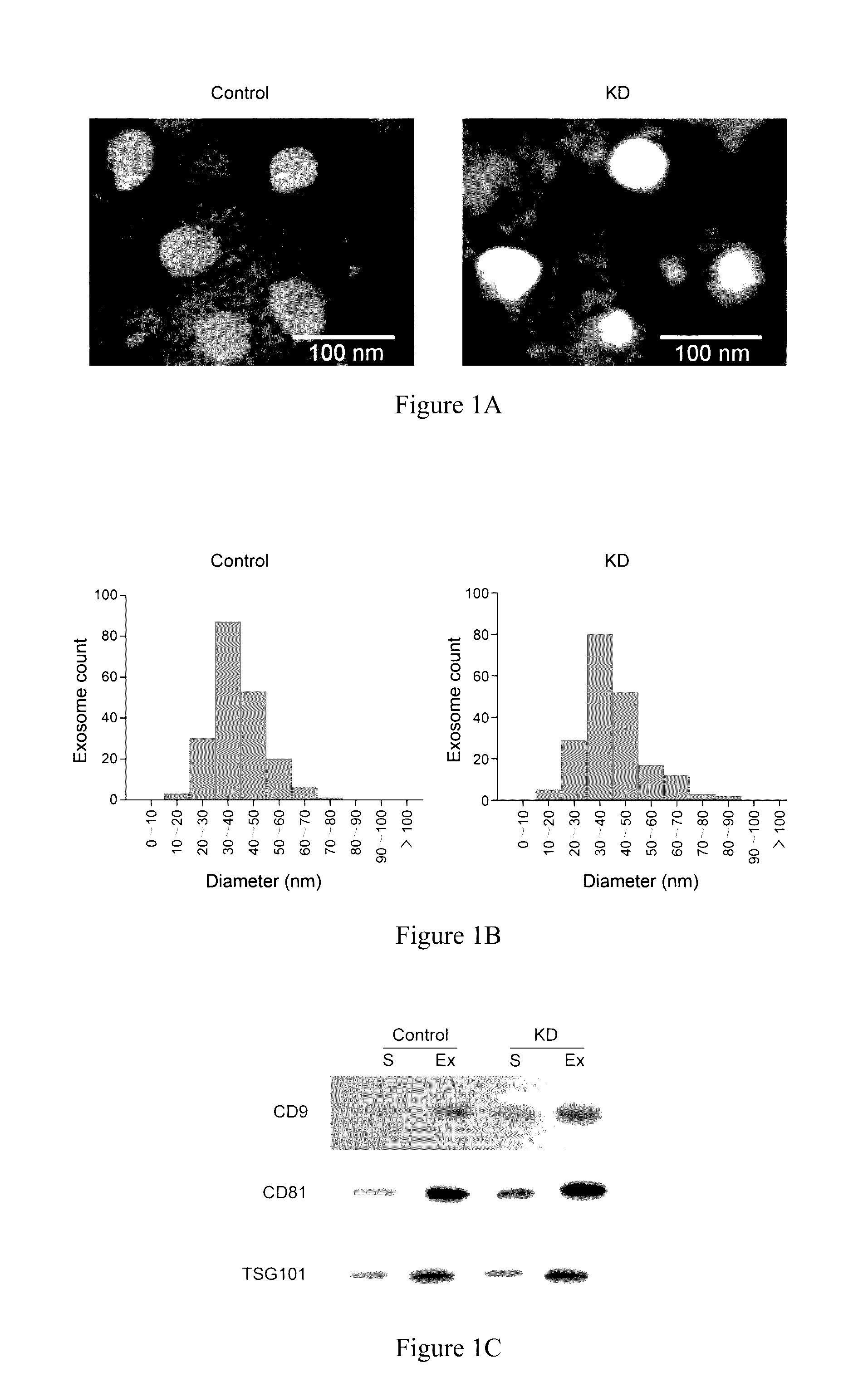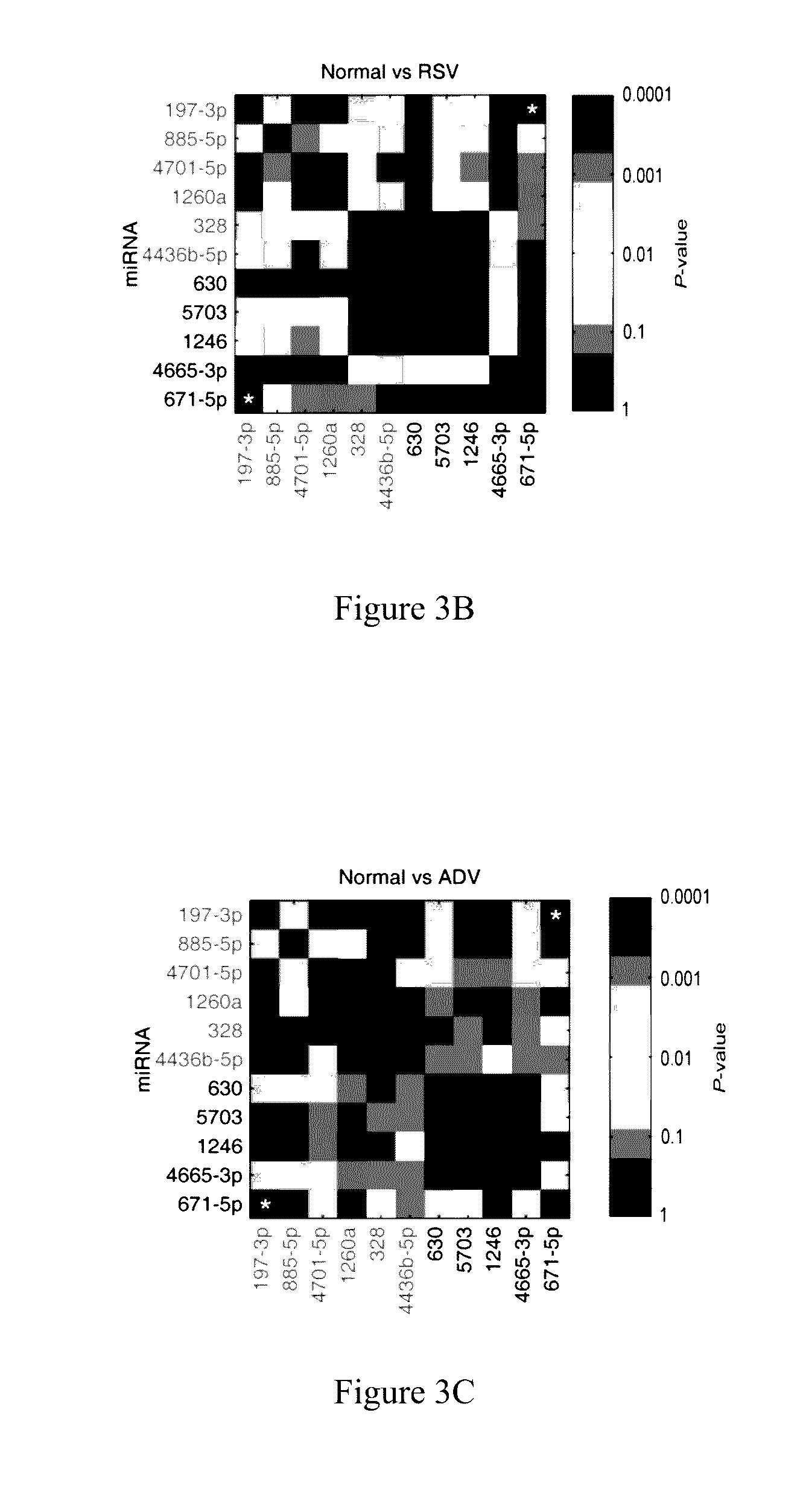Nucleic acid markers for rapid diagnosis of kawasaki disease and kit for detection of the nucleic acid markers
a technology of nucleic acid markers and kawasaki disease, which is applied in the direction of microbiological testing/measurement, biochemistry apparatus and processes, etc., can solve the problems of high risk of developing, ischemic heart disease and even death, and even sudden death in severe cases, so as to achieve easy-to-obtain samples, high specificity, and simple operation
- Summary
- Abstract
- Description
- Claims
- Application Information
AI Technical Summary
Benefits of technology
Problems solved by technology
Method used
Image
Examples
example 1
Screening the Nucleic Acid Markers for Rapid Diagnosis of Kawasaki Disease
I. Preliminary Screening
[0028](1) 500 μL blood was collected from healthy children and children with KD, respectively, and stored in refrigerator (4° C.) for 1-2 h, then centrifuged at 2000 rpm for 5 minutes, the serum was then isolated and obtained.
[0029](2) Exosomes were extracted from serum according to the instruction of the exosome extraction kit (System Biosciences Inc, Mountain View, Calif.).
[0030](3) The morphology of the obtained exosomes was observed under transmission electron microscope, and the diameters of all exosomes were determined about 30-100 nm (see FIG. 1A and FIG. 1B). Further, western blot was used to detect the expression level of three exosome protein markers (CD9, CD81 and TSG101) (see FIG. 1C) (refer to Stamer W D, Hoffman E A, Luther J M, Hachey D L, Schey K. L: Protein profile of exosomes from trabecular meshwork cells. J Proteomics 2011, 74 (6): 796-804 and Street J M, Barran P E,...
example 2
Verifying the Nucleic Acid Markers for Rapid Diagnosis of Kawasaki Disease
[0046]In order to further verify whether the 4 miRNAs (miR-328, miR-197-3p, miR-1246, and miR-671-5p) screened out by example 1 are closely related to rapid and accurate diagnosis of KD, RNAs in exosomes of fresh serum from 30 healthy children, 30 children with KD, 8 children infected by respiratory syncytial virus (RSV), 2 children infected by adenovirus (ADV), 2 children infected by EB virus were extracted, respectively; the obtained exosomal RNAs were then detected by fluorescence quantitative PCR as described in example 1; and the Ct values of miR-1246, miR-328, miR-197-3p and miR-671-5p were measured; the Ct values were then compared with each other and used as cross-reference so as to avoid bias caused by sampling process, operating procedure etc; the difference between Ct(miR-1246) and Ct(miR-4436b-5p) and
the difference between Ct(miR-197-3p) and Ct(miR-671-5p) were calculated; finally, the two differen...
example 3
Detecting Clinical Samples
[0053]Another 80 clinical serum samples were used to verify the rapid diagnosis of kawasaki disease, the specific steps were as follows:
[0054]1) extracting RNAs in serum exosomes as described in example 1;
[0055]2) treating the obtained RNAs with reverse transcription, and performing quantitative detection of miR-1246, miR-4436b-5p, miR-197-3p and miR-671-5p in exosomes as described in example 1 to obtain the Ct values of the 4 miRNA, then comparing the Ct values of each sample with each other, wherein the Ct values were also used as cross-reference so as to avoid bias caused by sampling process, operating procedure etc;
[0056]3) calculating the values of x, y for each sample, wherein
x=Ct(miR-1246)−Ct(miR-4436b-5p),
y=Ct(miR-197-3p)−Ct(miR-671-5p).
[0057]4) analyzing the results, wherein
[0058](1) If y≦−4.9 and y≦−x+5.6, it is KD.
[0059](2) If y>−4.9 and x≦10.2, it is virus infection;
[0060](3) If x>10.2 and y>−x+5.6, it is normal.
[0061]According to the above anal...
PUM
 Login to View More
Login to View More Abstract
Description
Claims
Application Information
 Login to View More
Login to View More - R&D
- Intellectual Property
- Life Sciences
- Materials
- Tech Scout
- Unparalleled Data Quality
- Higher Quality Content
- 60% Fewer Hallucinations
Browse by: Latest US Patents, China's latest patents, Technical Efficacy Thesaurus, Application Domain, Technology Topic, Popular Technical Reports.
© 2025 PatSnap. All rights reserved.Legal|Privacy policy|Modern Slavery Act Transparency Statement|Sitemap|About US| Contact US: help@patsnap.com



